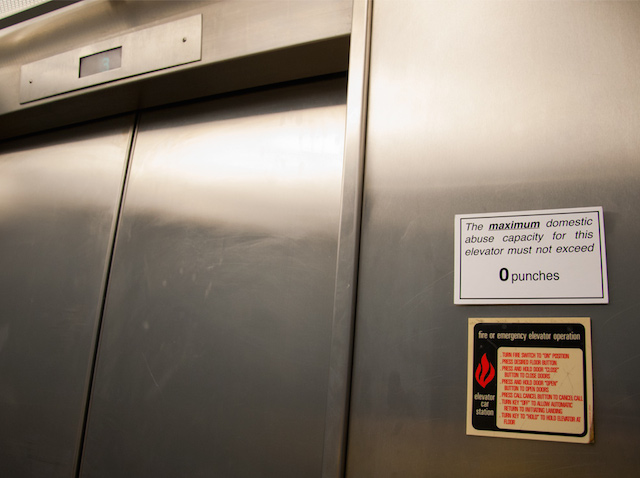
A timely reminder from Vinchen… The piece is called Capacity for Violence, and over on Vinchen’s website, you can download the sticker template for your own use.

A timely reminder from Vinchen… The piece is called Capacity for Violence, and over on Vinchen’s website, you can download the sticker template for your own use.
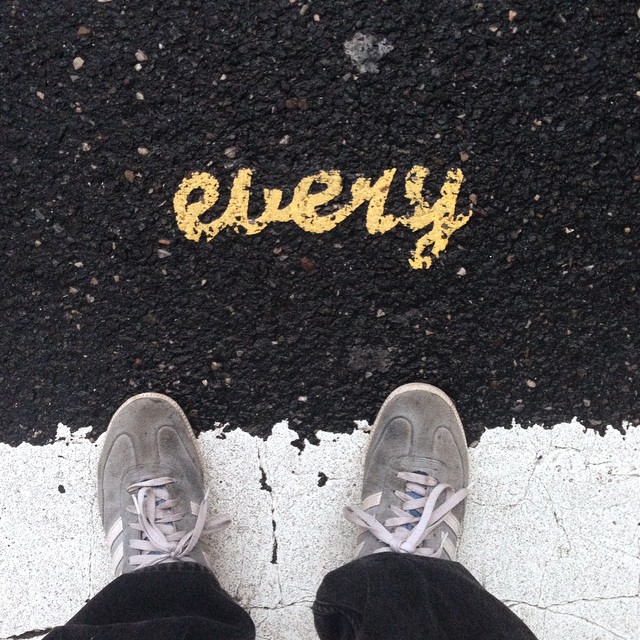
Loving my time so far at the City of Philadelphia Mural Arts Program, but it’s definitely more than a 9-5, so it’s time for me to play catch up yet again…
Photo by RJ Rushmore
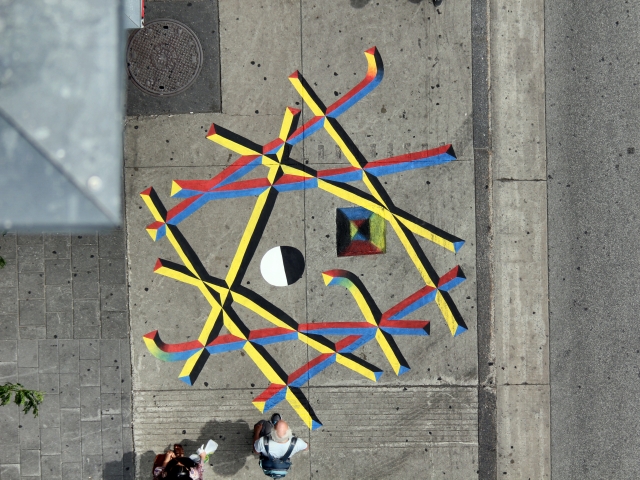
From May to mid-July, Mathieu Connery aka 500M painted several murals on sidewalks for the second MURAL festival edition. To the frequency of 1 per week, he did 10 abstract murals on the Main, the Saint-Laurent Boulevard, official location of the festival. Guess the organizers really liked the 3 sidewalks murals he painted last year for the first edition of MURAL, as they asked him to enlarge his project this year. The Montreal based artist is well known in the city for his minimalist abstract pieces, “I try to make most of my interventions interact in different ways with the environment, to inspire appropriation of the public space in any other way. It also applies in the streets with concrete, tags that were there before,etc…” I just hope that one day he will get a real wall rather than always sidewalks in Montreal!
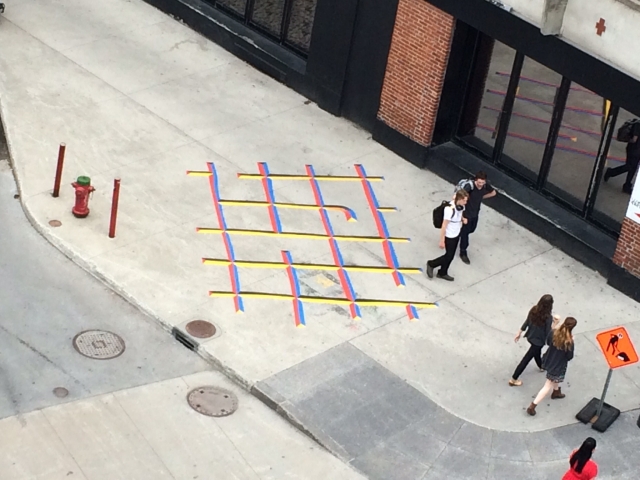
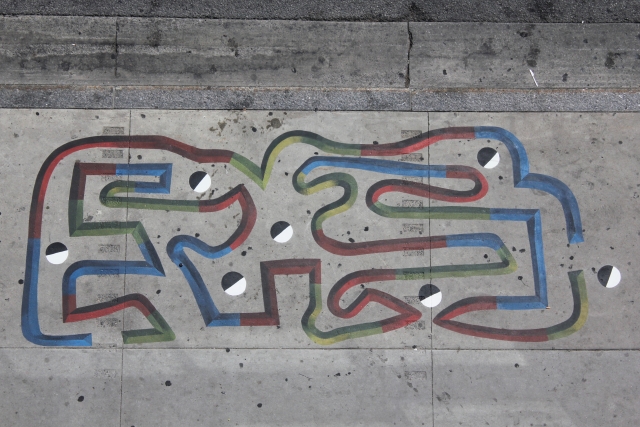
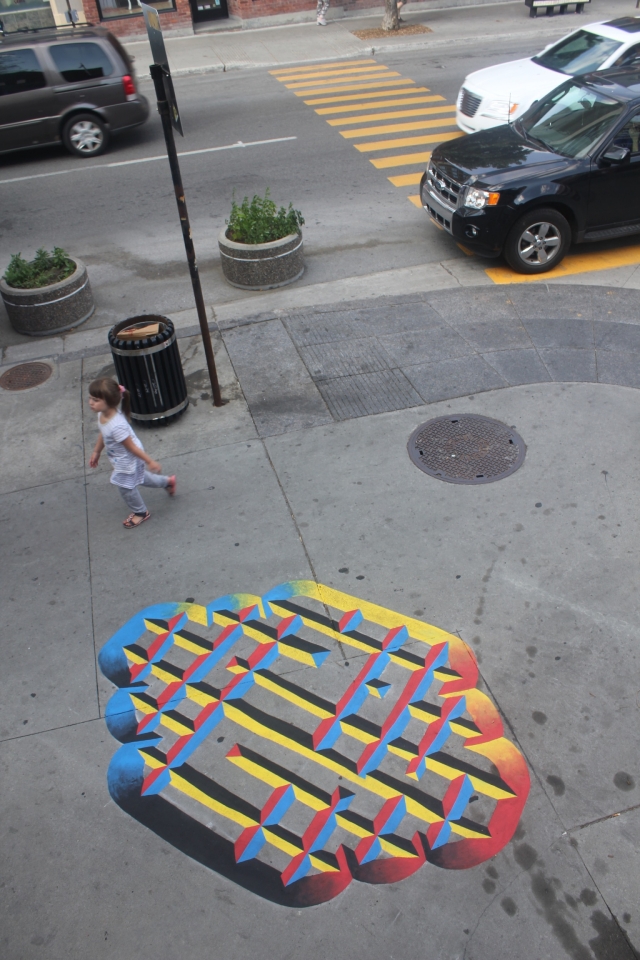
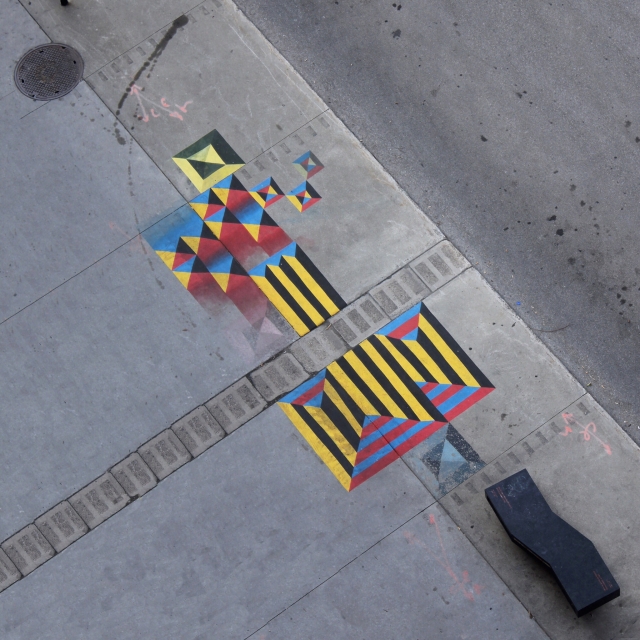

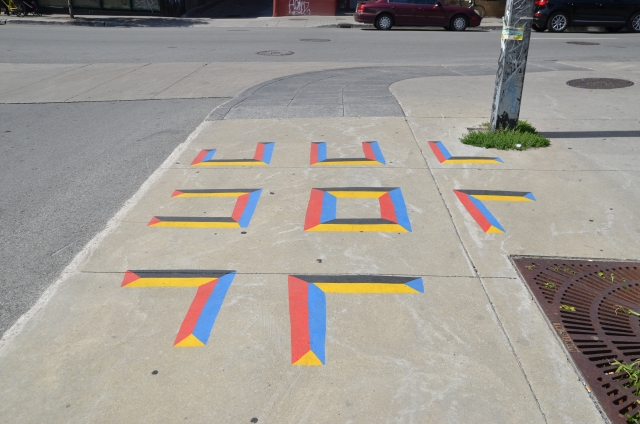
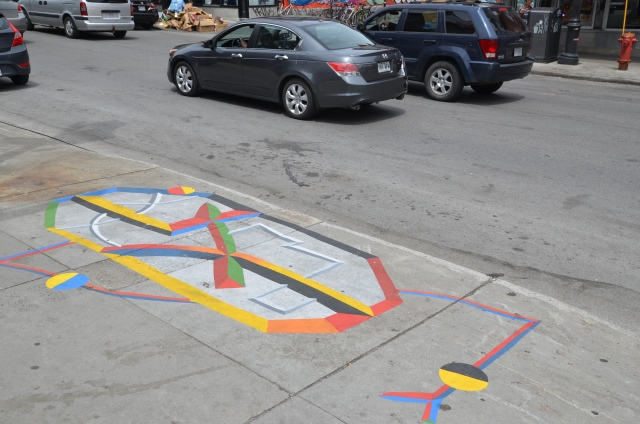
And for my own pleasure, a street art piece found this summer, and then a tag of Gawd Mathieu Connery appropriated. Thanks Mister 500M !
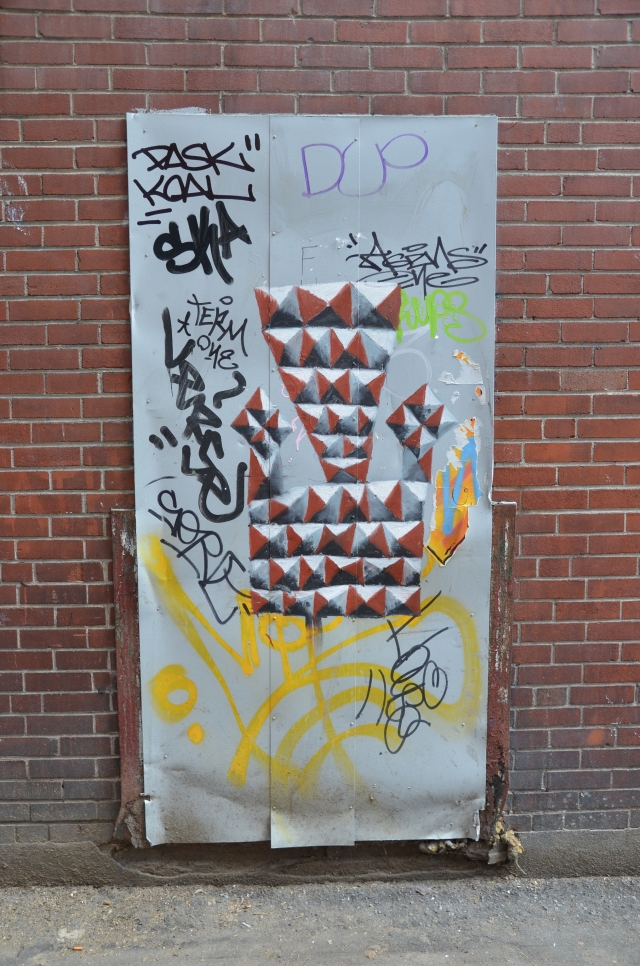
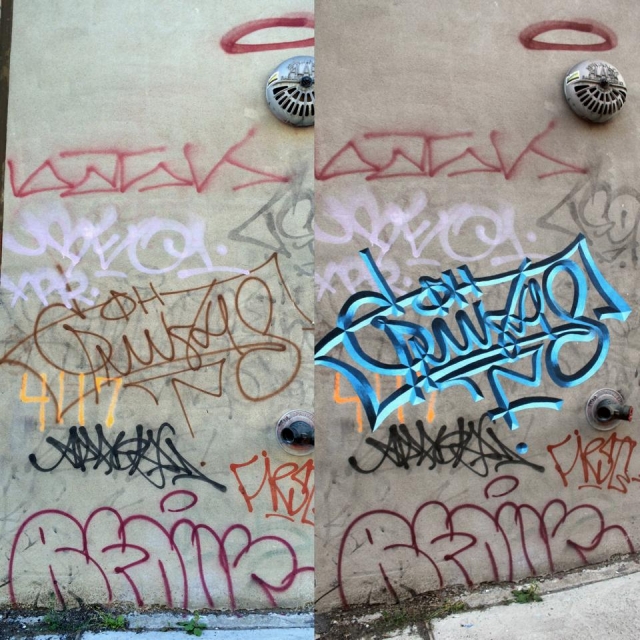
Photos by Mathieu Connery and Aline Mairet
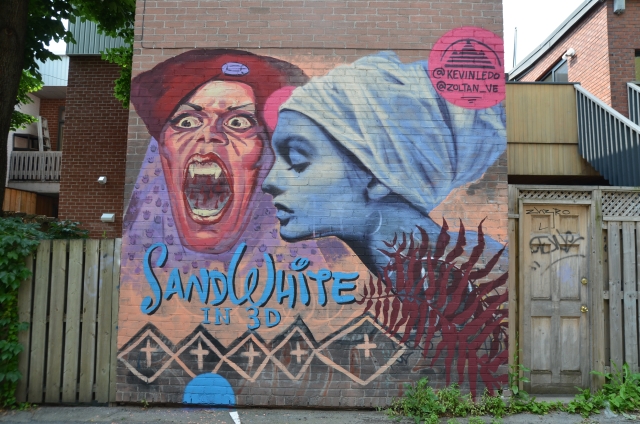
When I started to explore Montreal a few years ago, with my own very European background, it was a real pleasure to discover the possibility of walking across a city with the feeling of not being in an urban environment. The labyrinth of Montreal’s alleyways is a city in the city, without pollution, whether it was noise, cars, advertising or simply people. And in some of these back alleys, with time, I began to notice some amazing street art and graffiti spots. Several of these evolved, and became very popular, while some others finished to be abandoned by the artists. However, it was always the same pleasure to observe how artists succeeded in transforming places that were not aimed to be street art spots. The one I present below became a regular stop in my street art escapes when Gawd and Waxhead shared a studio 2 years ago and decided to paint the back wall of this place. Then this spring, Nixon, Kazy, Zoltan Veevaete and Kevin Ledo raised the alleyway to the next level by adding some impressive art work. Rapidly tagged, these guys came back in July to fix their pieces. It was also the perfect timing for Zoltan and Ledo to collaborate on a mural they called “Sand White in 3D” (above).
First piece by Waxhead and Gawd, summer 2012:
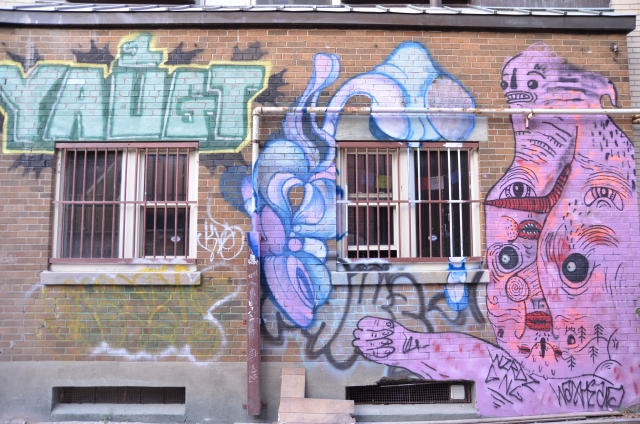
Following pieces by Nixon, Kazy, Zoltan Veevaete, June- July 2014:
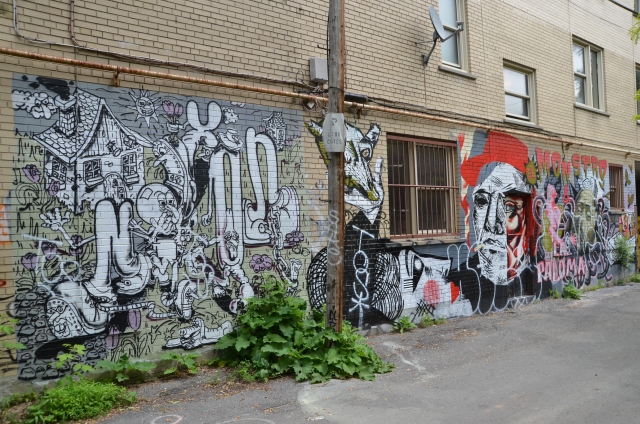
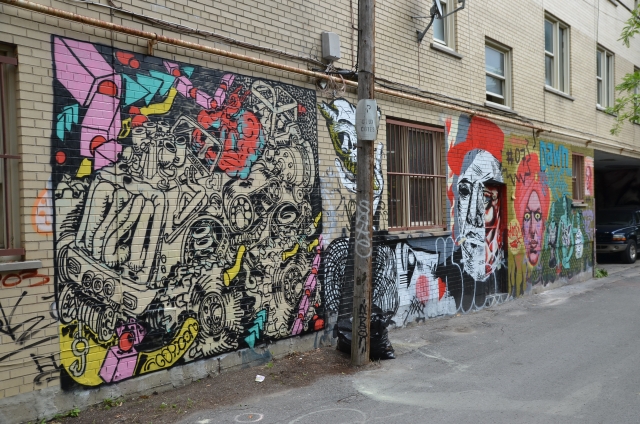
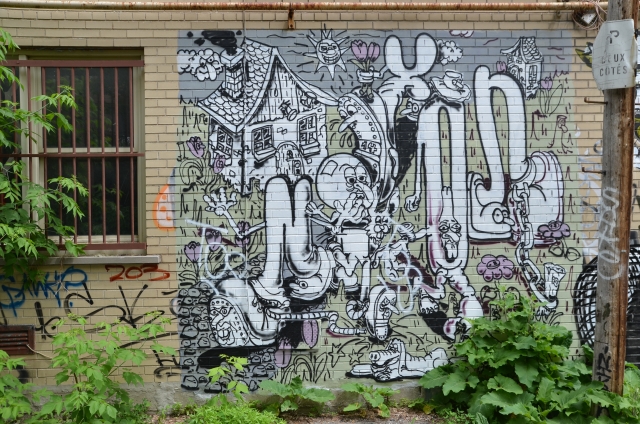
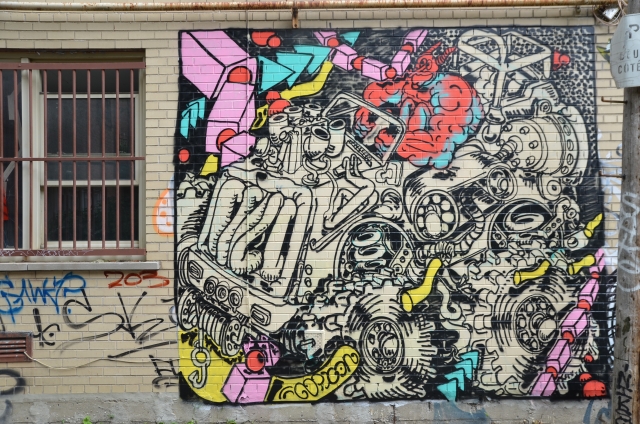
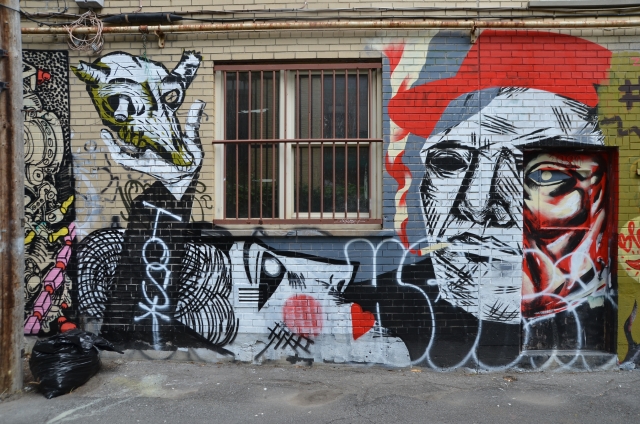
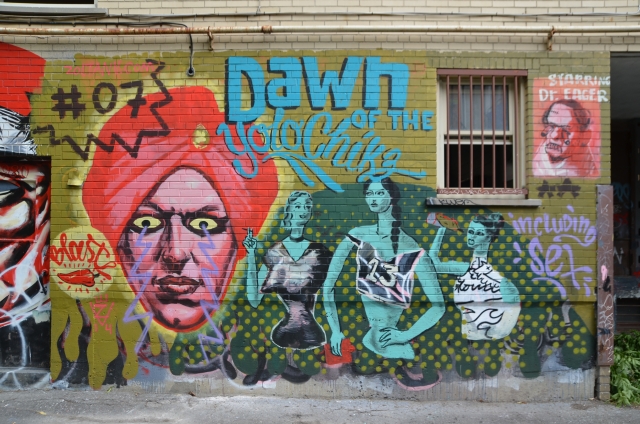
Other pieces of Zoltan V. and Nixon, between June and July 2014:
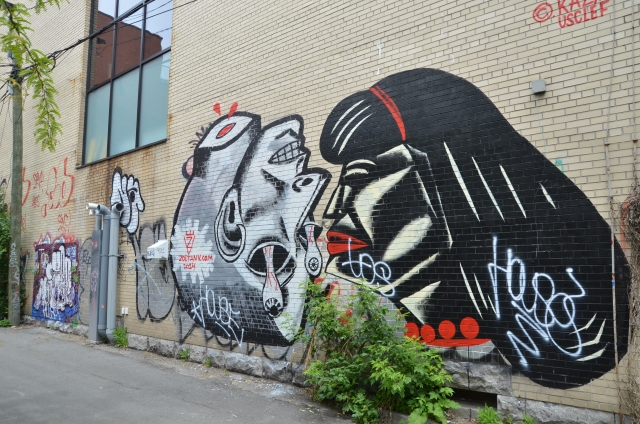
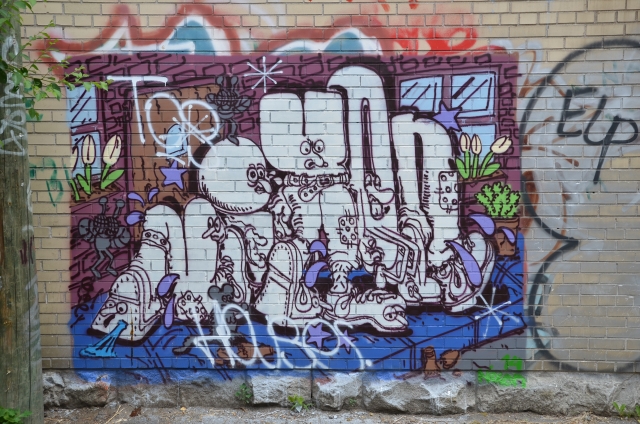
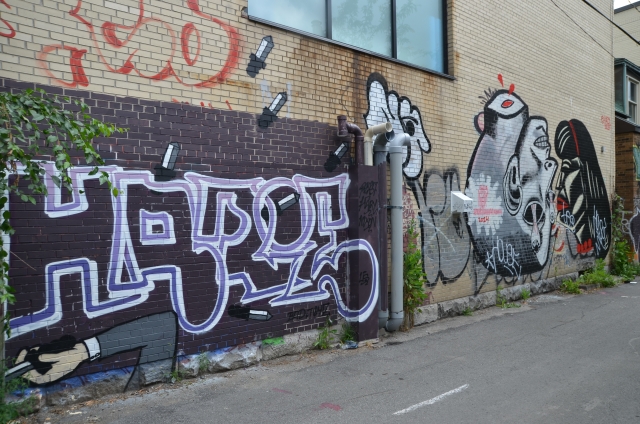
Piece by Kevin Ledo, based on a portrait of a First Nations woman, June 2014 (see the whole portrait of the woman Ledo painted during the MURAL festival):
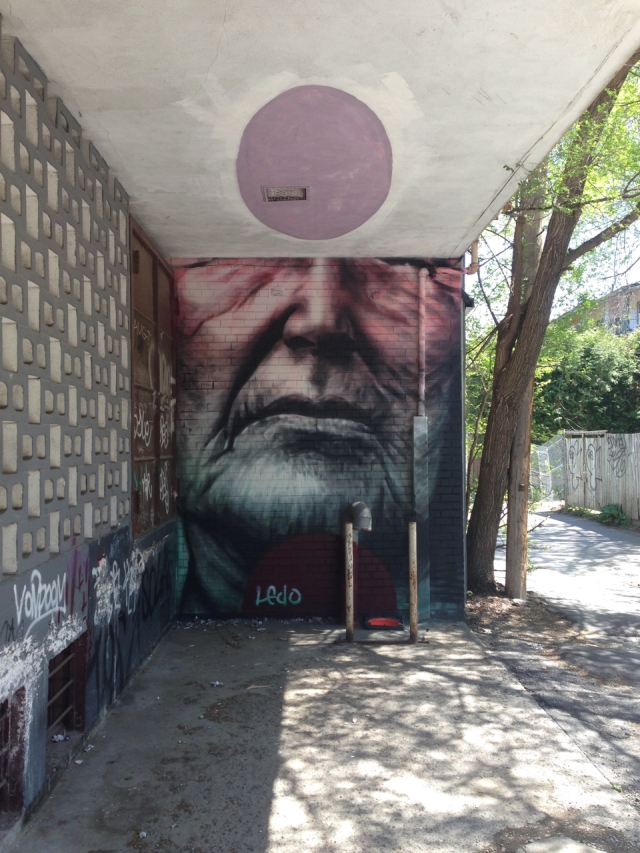
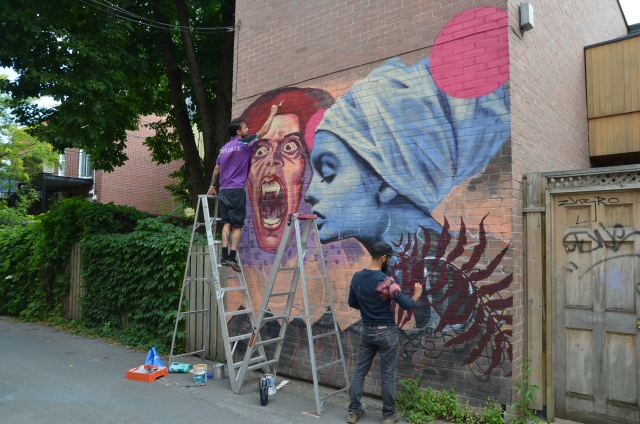
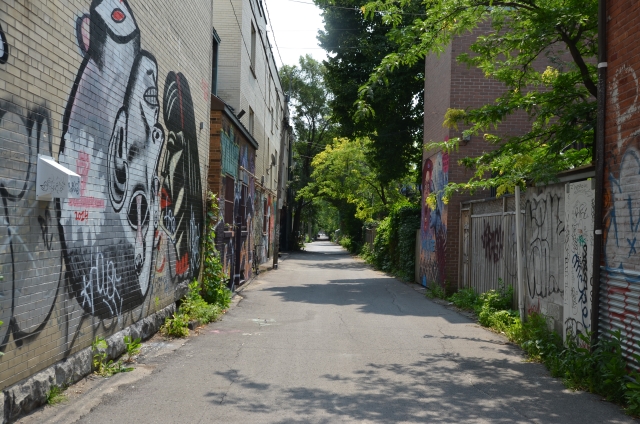
Photos by Aline Mairet and Kevin Ledo
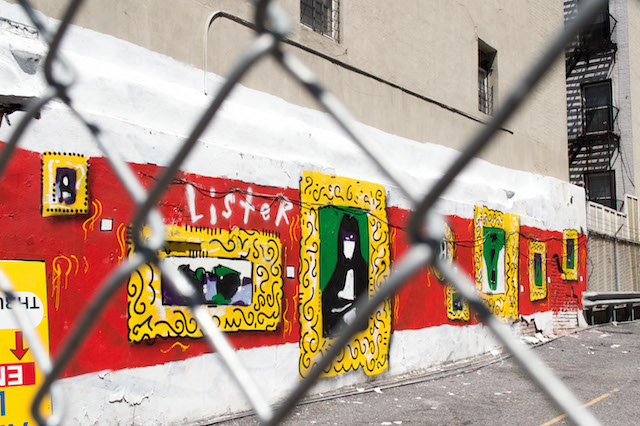
Wow. I have been falling behind on Vandalog lately. I’ve been just a little bit busy at the Mural Arts Program. The last month and half have been almost as busy up in NYC with The L.I.S.A. Project NYC. I’ve got to hand it to Wayne and Rey, the other two main team members there, for really carrying the project this summer as I’ve adjusted to my new job. There’s been some exciting work going up, including murals by a few people that we’d been wanting to work with for quite a while.
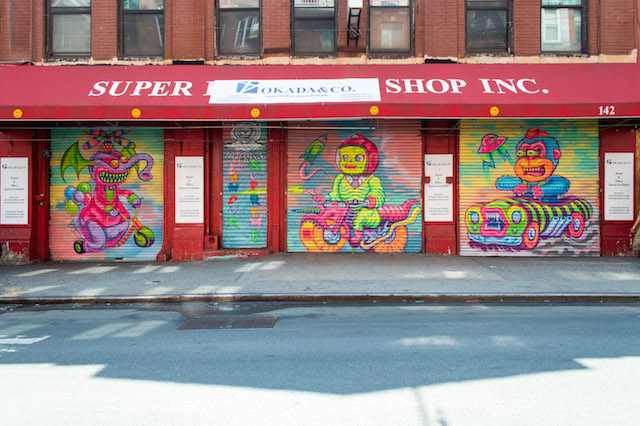
Let’s start with L’Amour Supreme. We first worked with L’Amour Supreme as part of a Secret Walls event in Little Italy last fall, and he came up with a really fun concept his mural on Mulberry Street: A series of twisted tin toys. I had the chance to hang out in front of this mural briefly while it was going up, and it felt like everyone walking by was stopping to give a thumbs up. Good stuff.
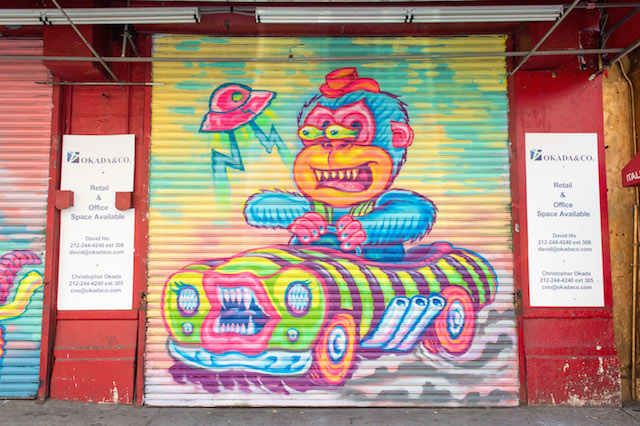
And then there’s Queen Andrea. She’s been on our list for a while. She knows how to paint, the work is uplifting, she’s a New Yorker. Her mural, on a security shutter in the East Village, went over a great Phlegm piece that I’ve long admired, but it had been hit with graffiti and it was time for a refresh. I’d say Queen Andrea did the wall justice.
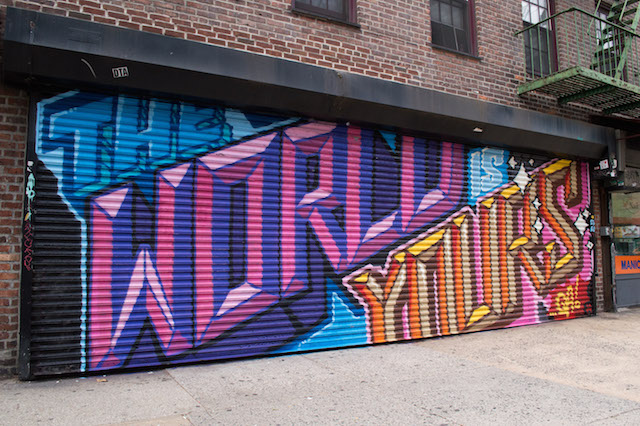
One of my dreams has been work with Anthony Lister. When we found out that he was due to have a show at Jonathan Levine Gallery, I began pushing that we absolutely had to find a wall for him. I soon discovered that I didn’t have to push too hard. After all, who doesn’t want a Lister mural? He wound up with a pretty large spot on Mulberry Street, in the same lot as Ron English’s Temper Tot and our wall with Secret Walls.
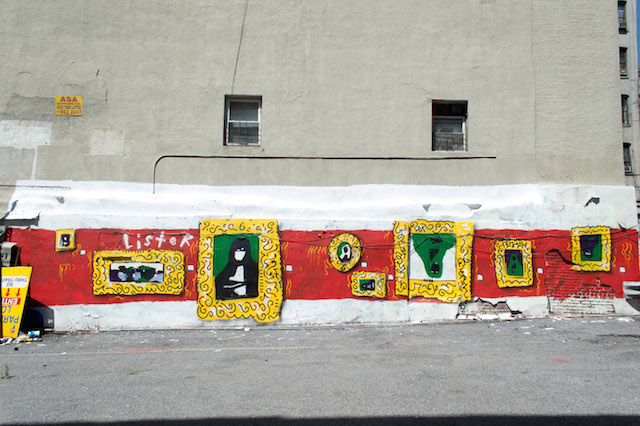
I thought might have lost the wall at Mulberry and Kenmare where this happened with Mint and Serf, but no. While much of that spot has been taken up with a new display advertising magazines, we were still able to squeeze in a piece by Solus. Solus’ mural is tribute to NYC’s Irish and Italian immigrants, and it makes for great photos.
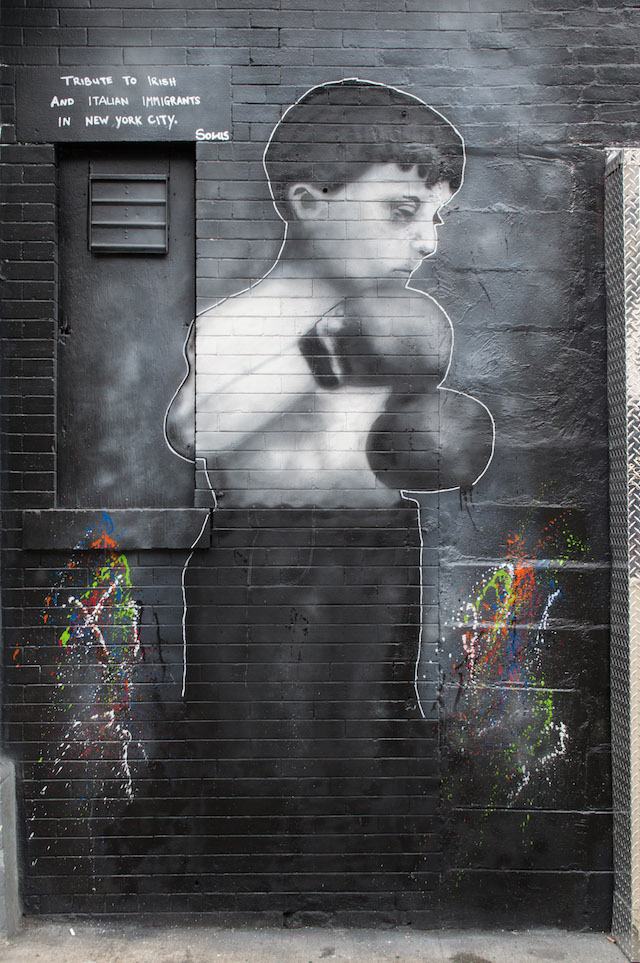
And finally, I’ve been a fan of Michael De Feo‘s work for a long time. His flowers just put a smile on my face, and last weekend, we got one in Little Italy. Another mural that’s long overdue.
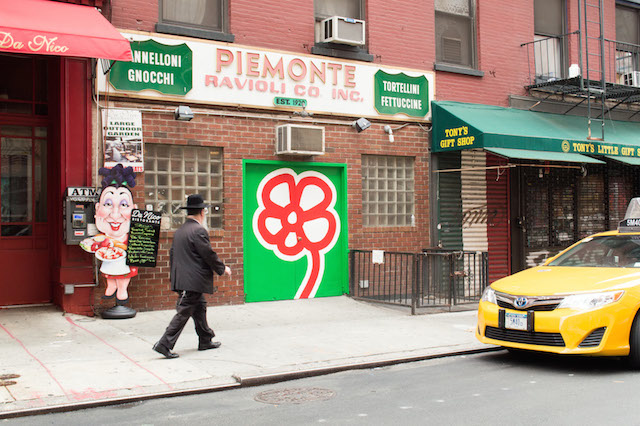
Photos by Rey Rosa Jr. for The L.I.S.A. Project NYC
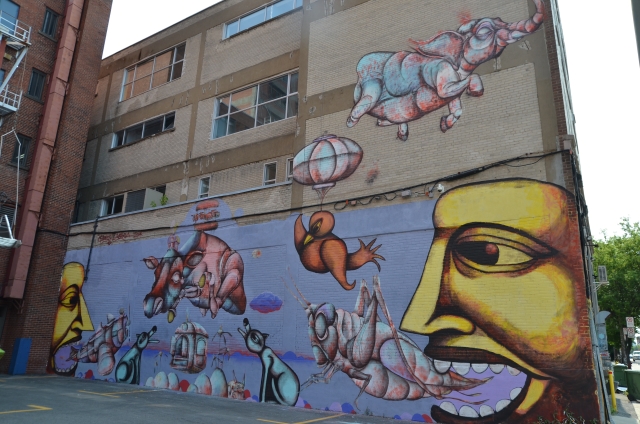
It’s not really a surprise if I tell you that Labrona is one of my favorite artist in the Montreal art scene… I could probably say he is my favorite. so I am really lucky to have time to catch him on several projects this summer. First, just before the MURAL festival, Fred Caron, Kashink and him collaborated on a mural in Griffintown area. Second, he painted 3 doors during MURAL. Then there is this big wall he painted with Gawd in mid-July (above), and finally a beautiful series of portraits with Monosourcil pasted on the streets in June. Very stunning collaborations! And it’s only the beginning of the summer…
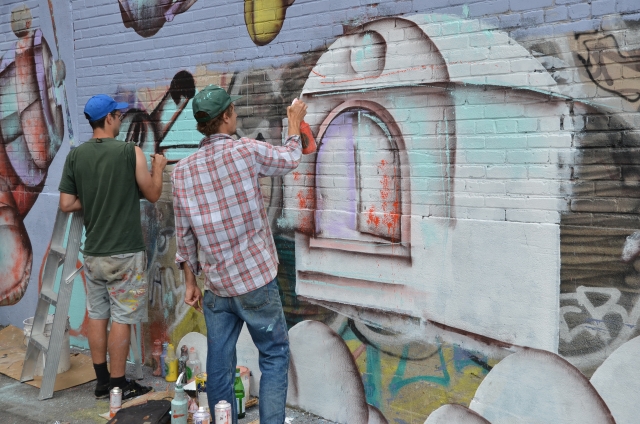
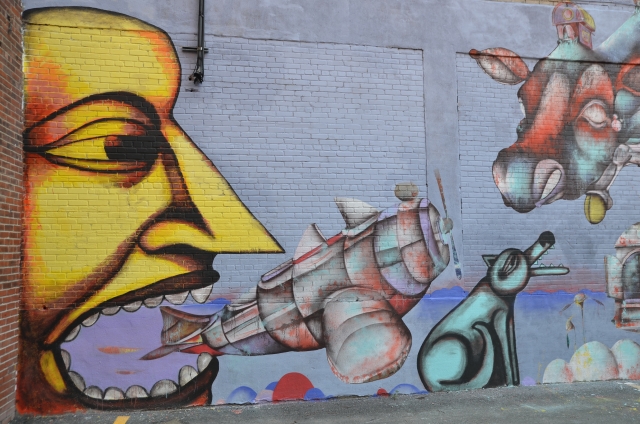
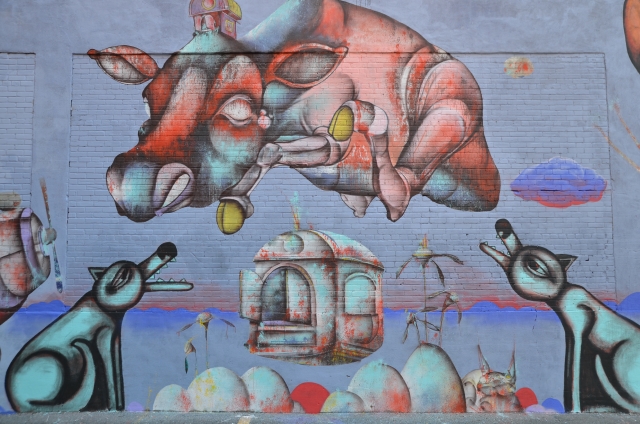
Mural by Labrona, Fred Caron, Kashink:
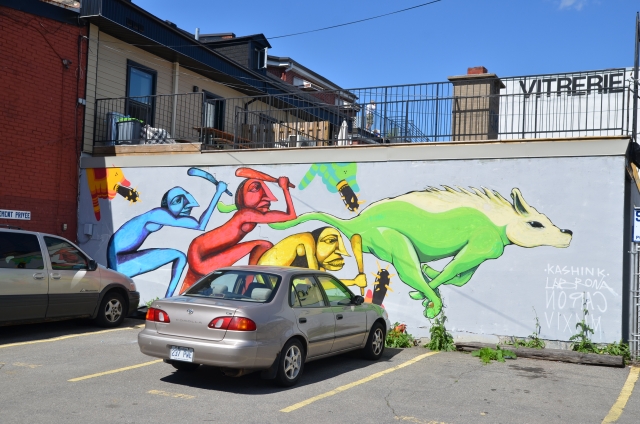
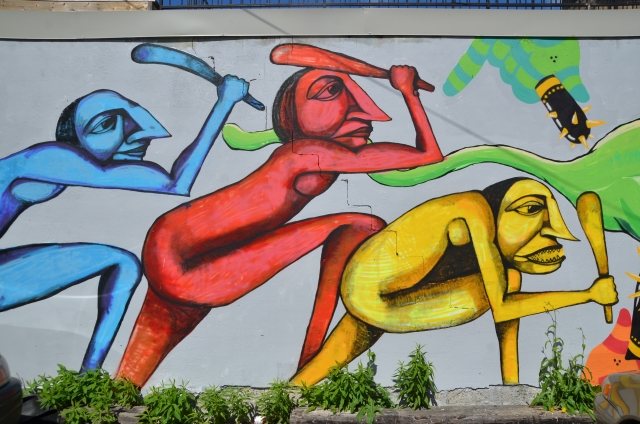
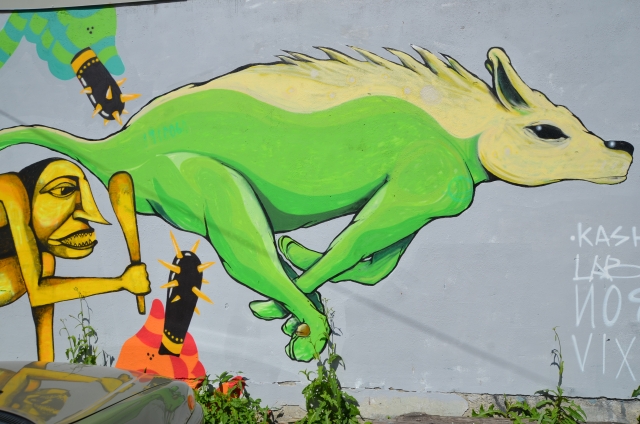
2 of the 3 doors produced during MURAL festival:
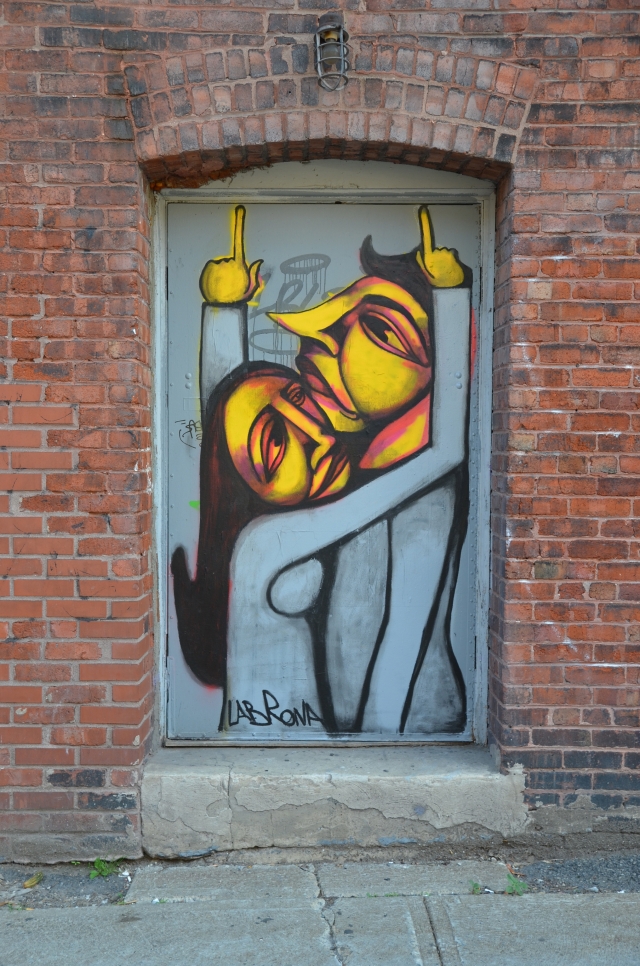
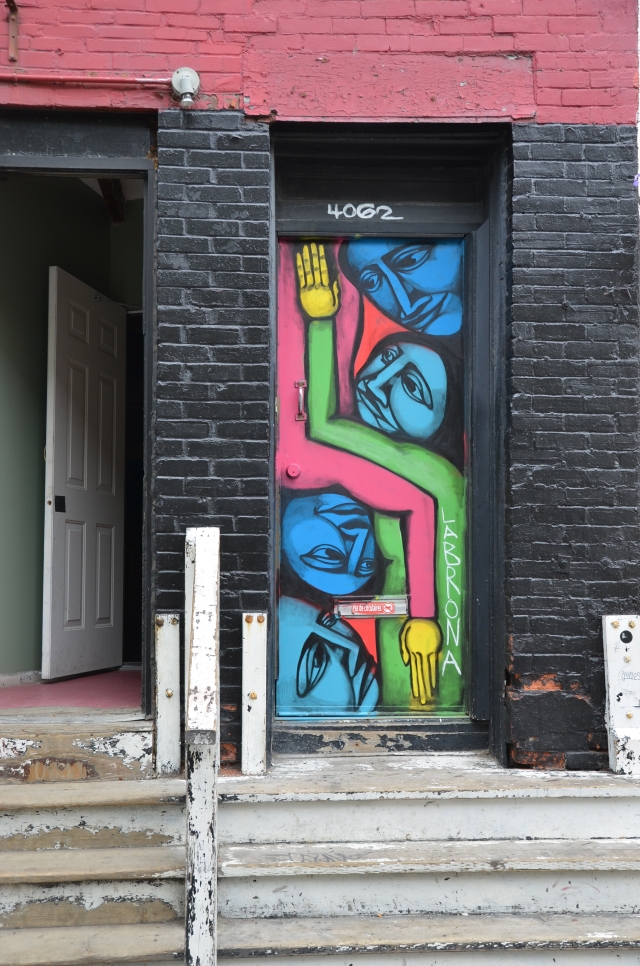
And the pieces with Monosourcil…
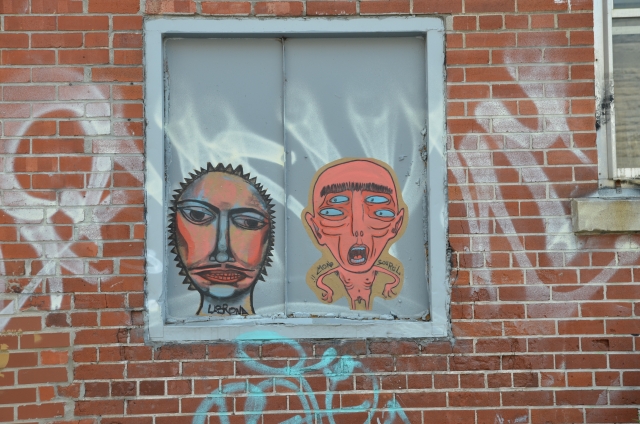
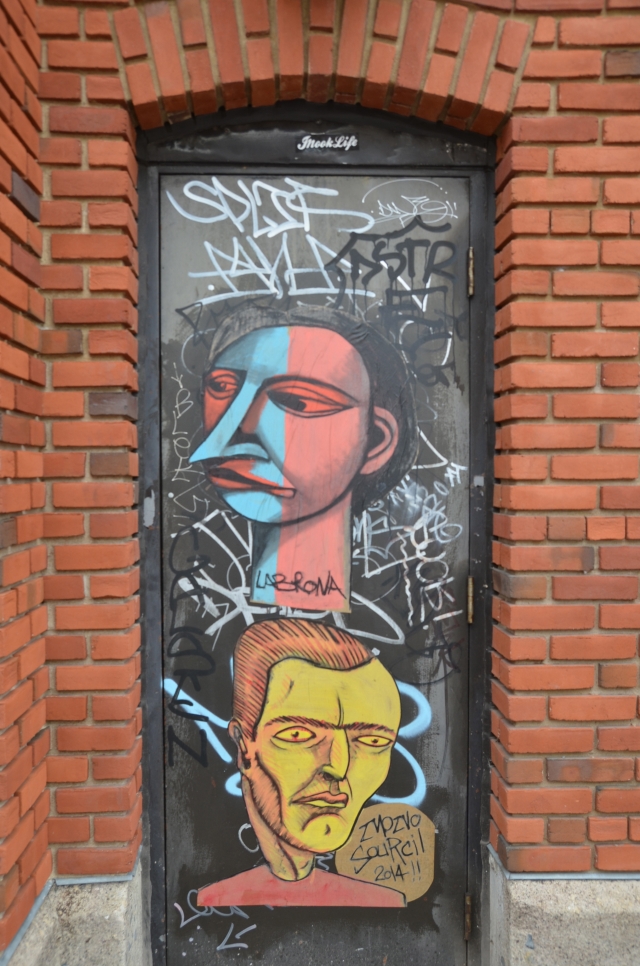
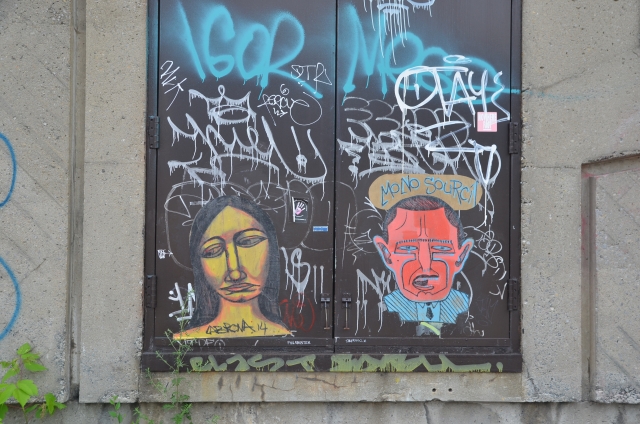
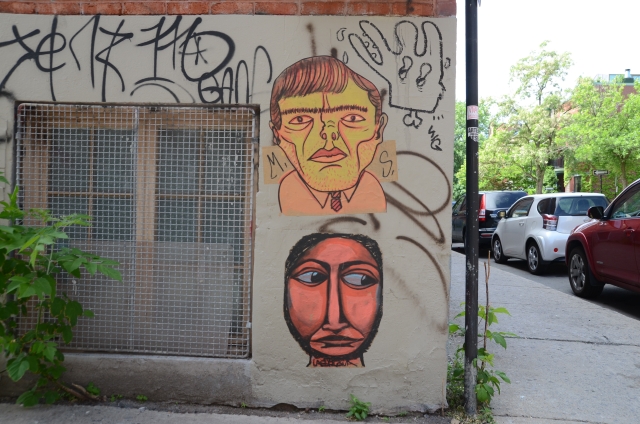
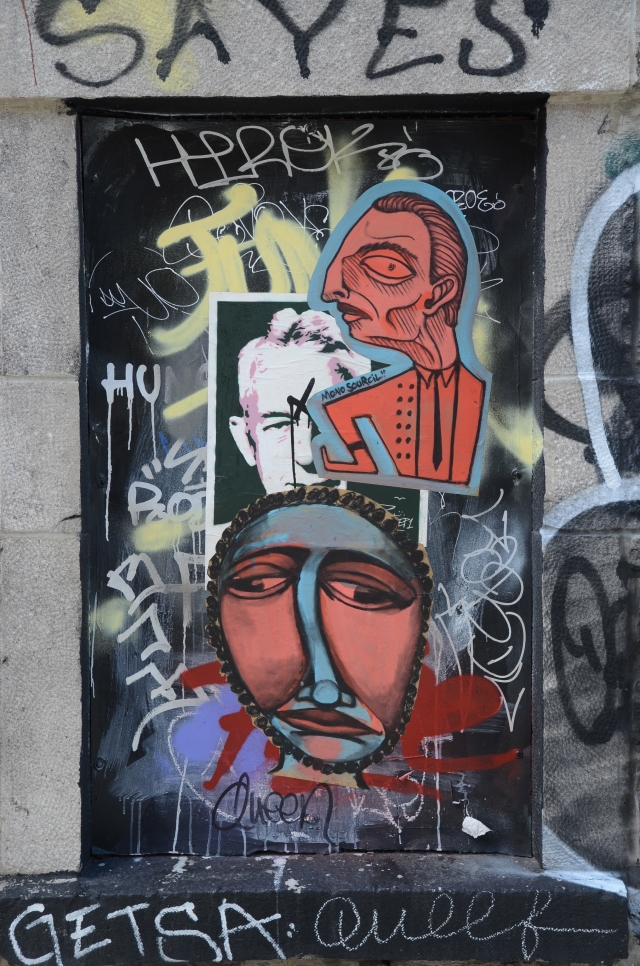
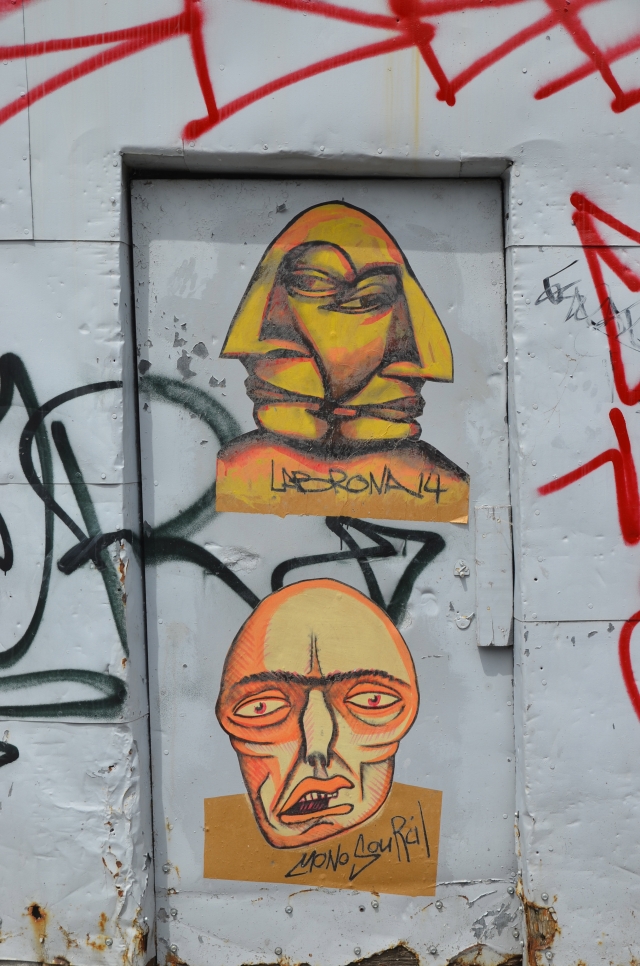
little more, a detail of the last ceiling he is actually finishing, part of the mural he started last fall:
Photos by Aline Mairet
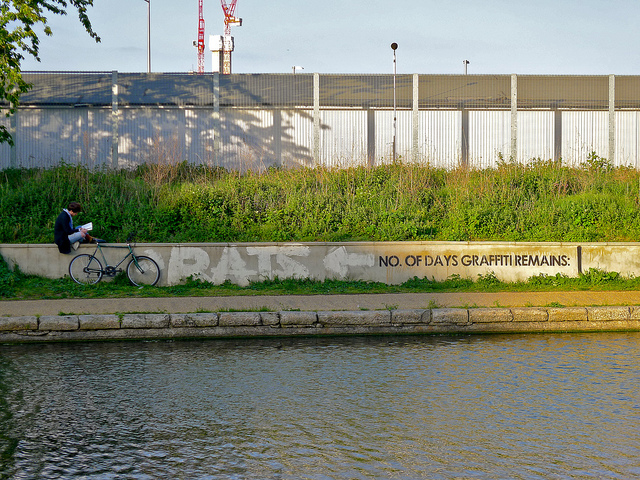
Last summer, I was visiting London and came across the above piece by mobstr in Hackney Wick. The piece was good for a laugh and I took a photo, but then I didn’t think much more of it. Until last week that is, when mobstr emailed me the update to the piece. Turns out, mobstr’s piece wasn’t a one and done. The count was accurate. Like much of mobstr’s previous work, this piece is a taunt and a game with the police and the buffman and took some real commitment. Here are the results…

Continue reading “Watch a work by mobstr grow daily for over a year…”

At the age of 11 I fell in love with graffiti. It was the mid 1980’s in NYC and it was a great time to be a kid being shuttled back and forth from Manhattan to Brooklyn, Brooklyn to Queens, Queens to the Bronx, the Bronx to Staten Island, and Staten Island to Long Island. I had family in each borough, and I always loved those journeys for a lot more reasons now than I knew at the time. They were multi-sensory, stimulating inspirational portals of awareness. I became hyper aware of the art on the streets and I wanted to participate. At 12 years old I was far too scared to put the works directly onto the streets at the time, but I wanted to learn that style, and I began writing. Twenty five plus years later, the same energy still inspires my work, but an evolution has taken place. Its not just in my own work, the whole medium and context of graffiti as a subject has expanded. My new installation dictates to me how times have changed within my own public art practice as well as a metaphor for how graffiti is changing. Of course there are tons of amazing artists worldwide who have taken the traditional letter styles and characters to amazing new levels of style and execution. I will always be a fan and a lover of that form of graffiti, but I do see and have desires to communicate the evolution of graffiti as a subject itself.

The sterile white glossy public bathroom walls call out to writers. It begins in your junior high school’s bathrooms and transcends right through to the bus or train you took to high school and into the rest of the world. To this day I still love finding the tags of my friends still holding up in public bathrooms. Mostly in bars and pubs but some of these tags have been in place for over 15 years. In this context, of course I could have pulled out a marker and tagged this space, but that is not in my interest the same way as it was years ago. My perception of could be done in the space has changed. With this piece, it is my intention to evoke the memories of the past, while suggesting what could have happened if the cans were real and full of paint. This installation sets the stage for both. The walls are clean and free of any markings, yet the very present dormant outdated cement cans remind the viewer what could have happened in this space, and that a graffiti artist wanted to remind them of that. The casts are not adhered to the floor, they can be picked up and taken. This puts the viewer in a position to make a few choices about the work and hopefully how they may obtain a piece of art. In this case it will not be through a gallery, art dealer or an auction, there is a whole other impulse to deal with.

Find these cans if you can. My cement works always get left behind, they are easy to transport, anonymous and unsigned.

Photos by Ryan Seslow
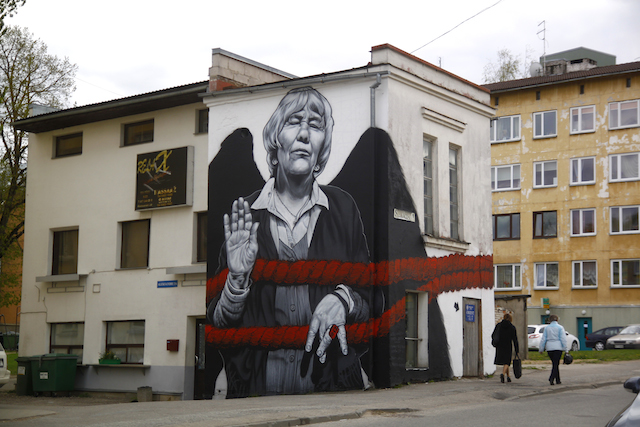
Today we have a guest post from Marika Agu and Sirla, two organizers of the Stencibility festival in Tartu, Estonia. The example of Tartu shows that even smaller cities can have a thriving street art scene. – RJ Rushmore
With a population of 100k, Tartu is the second largest town in Estonia. It’s mostly known for its university, which might not sound attractive in the context of globalization, when it’s cheaper than ever to travel to culturally vibrant capitals. Nevertheless, the town has something unique and unexpected – for a small place like Tartu, there’s an extremely high concentration of highly varied street art. It’s something really new for the town as the scene has evolved in the past 7-8 years.
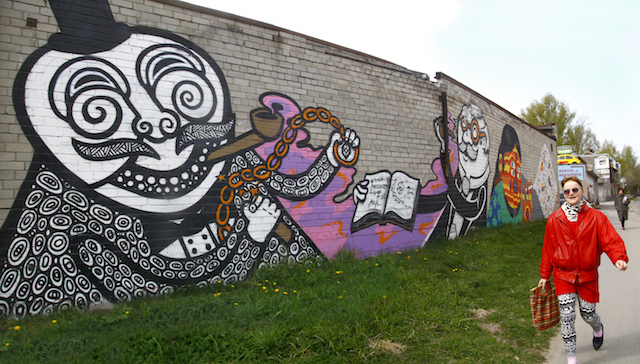
The local street art festival is called Stencibility. It started out from the stencil scene 5 years ago, since then Stencibility has turned into a street art festival that has bigger significance each year. The festival emphasizes including the local community with educational programs, lectures, workshops, photo competitions, guided tours, street art map, exhibitions etc., and the people living in Tartu are generally positively minded towards street art. Even the city council acknowledges it, even though most of the time the festival is shamelessly promoting illegal street art. For example, one of the local street artist Edward von Lõngus was awarded in 2013 with an official cultural award for an illegal stencil work.
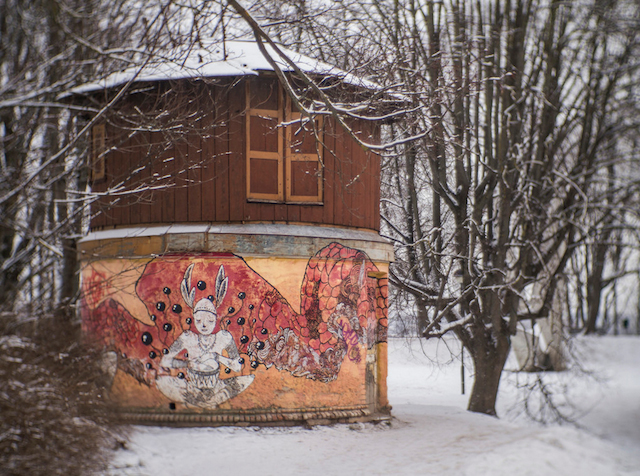
This intense activity has led Tartu to become the street art capital of Estonia and an alternative to nearby larger cities like Tallinn, Helsinki and Riga that have declared a zero-tolerance policy on illegal graffiti and street art. Tartu’s self-designated galleries, hidden treasures in abandoned buildings together with bits and pieces all over town, are must-see spots for every urban explorer. Tartu hosts a wide range of works from foreign and local artists like MTO, Kashink, Facter, Multistab, Edward von Lõngus, MinaJaLydia, Thobek, Brush Lee, Müra2000, Okeiko and many others.
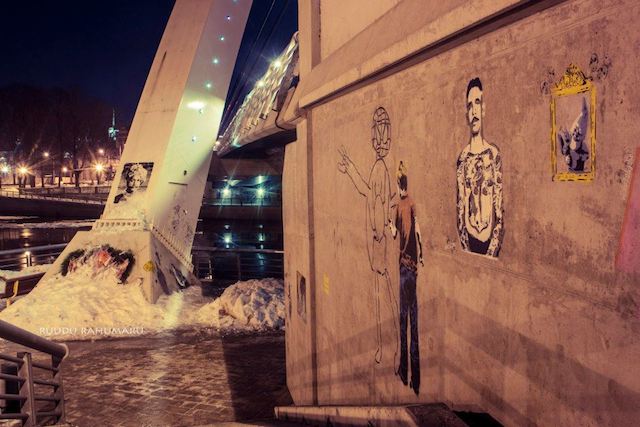
As the street art and graffiti scenes in Tartu have grown, local officials have implemented methods of control that rely on their discretion rather than a one-size-fits-all policy. In May 2013, a controversial incident happened involving the city council and the street art activists who have been organizing Stencibility. Tartu officials decided to buff the most active self-designated gallery in the city, a spot under a bridge called the “Freedom Gallery.” After some alarmed citizens noticed something strange happening under the bridge, they called the mayor Urmas Kruuse to ask for an explanation (it might seem strange, but this can be taken as a positive aspect of a small town). The mayor interrupted the removal work and asked for a consultation with the organizers of Stencibility on how to deal with the spray-painted images. After some thought, those of us organizing the festival decided not to intervene in the city’s natural changing process or the government’s decisions by being the curators of illegal street art. We let the mayor and the other city officials decide for themselves what would stay and what would go. In the end, the “Freedom Gallery” was partially buffed, keeping the works that the city workers in charge of the removal deemed “beautiful” and removing the rest. So, the city is not a free-for-all, but at least officials seem open to the idea that even illegal street art and graffiti may have some benefits.
Although the phenomenon of street art can be found in all parts of the world, it’s important to note that Tartu, with its small size, is significant especially for its street art. You can take this as an invitation because I’d suggest to join the view as long as it’s alive and kickin’.
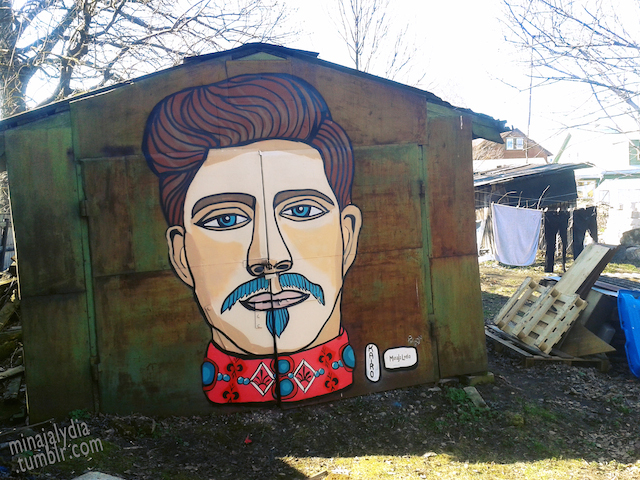
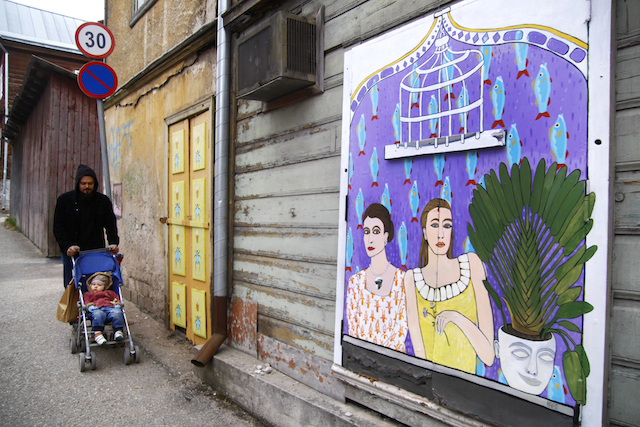
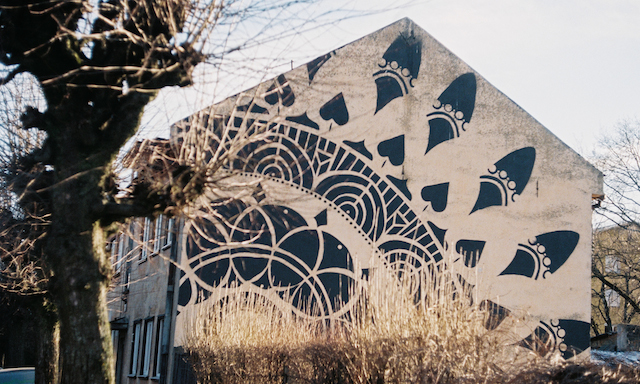
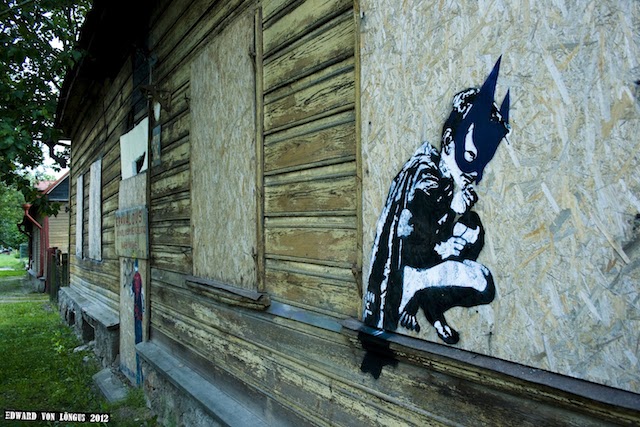
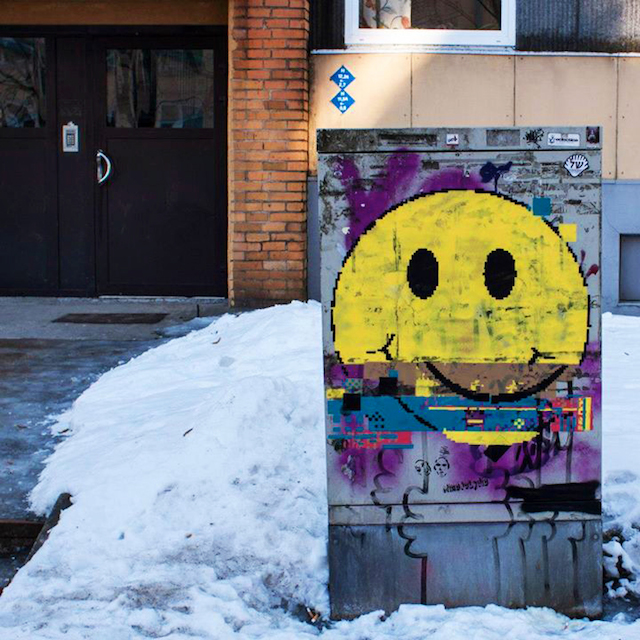
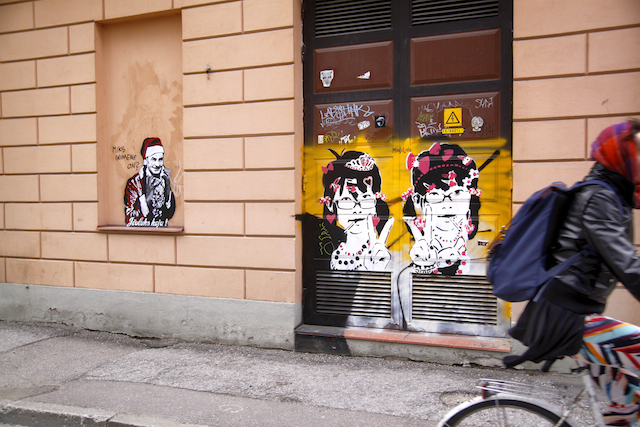
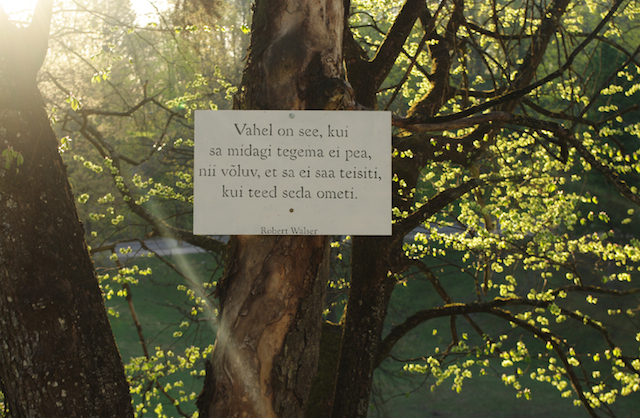
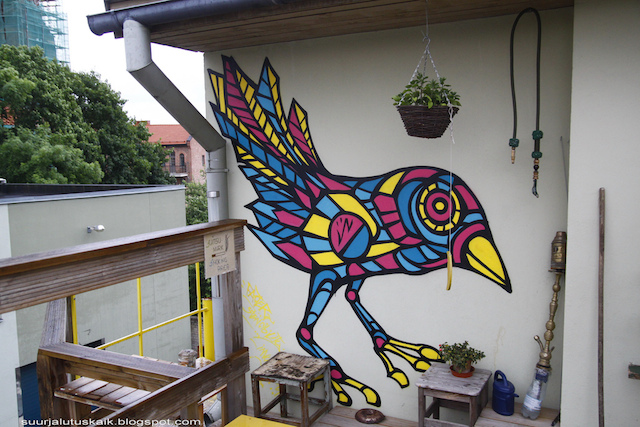
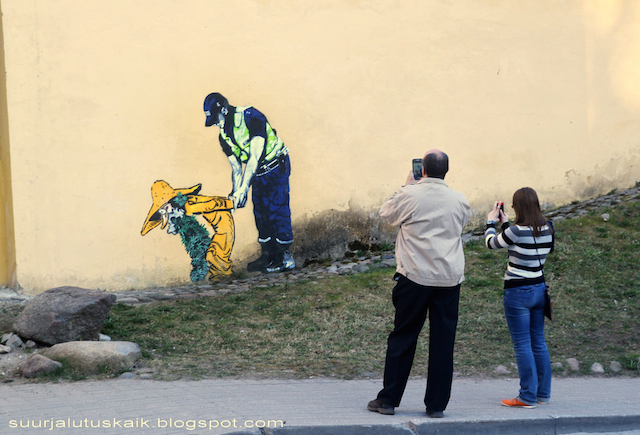
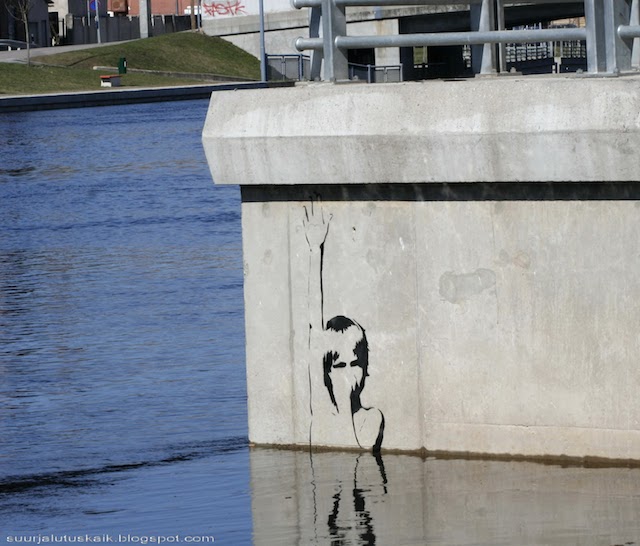
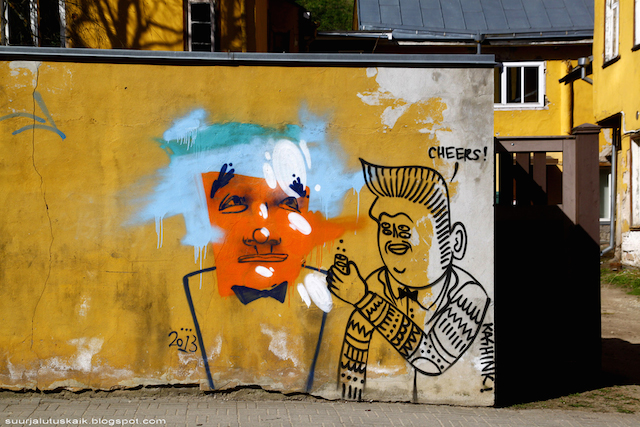
Photos by Jyri L Mets, Ruudu Rahumaru, Edward von Lõngus, Ragne Schults, and Suurjalutuskaik, and courtesy of Marika Agu and Sirla
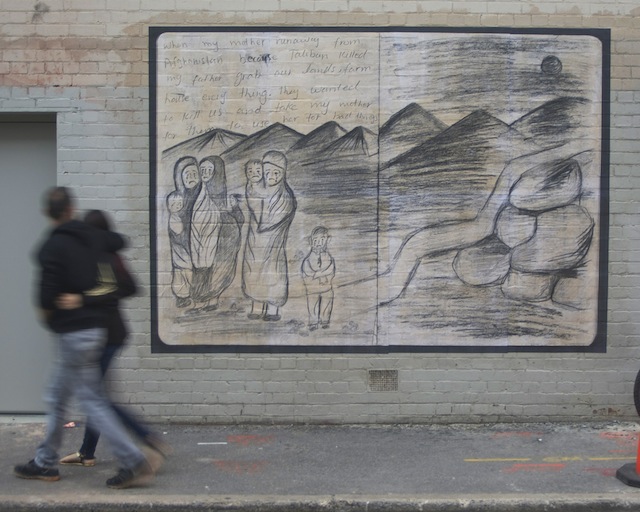
Australian street artist Peter Drew recently installed a series of wheatpasted drawings on the streets of downtown Adelaide, Australia. Of course, that sounds like what plenty of street artists do, except that these wheatpastes aren’t Drew’s design. Each wheatpaste is a blown-up version of a drawing by a person seeking asylum in Australia. The project is an effort to take on the very very controversial immigration detention centers in Australia that those seeking asylum in Australia often spend a great deal of time in, and to humanize the asylum-seeking process in general. This isn’t the first time that these facilities have caught the attention of the art world, but Drew’s project attempts to give the issue a personal touch, which is somewhat less common.

Made up of 36 drawings by seven asylum seekers, the Bound For South Australia series takes some of the most disenfranchised people in the world and attempts to give them a very loud voice. Many of the drawings had to be smuggled out from the Inverbrackie Detention Centre near Adelaide, where many asylum seekers are currently being held (although the facility will be shut down later this year). One particularly key contributor was Ali Rezai, an Afghani teenager who has made his way from Afghanistan to Pakistan and now to Australia and currently holds a temporary Australian visa. This video tells some of his story:
But Ali is the exception. Most of the other works are uncredited. I asked Drew about that decision. Here is his response:
It’s an ethical juggle. The worst thing that could possibly happen from this project would be one of the participants being deported for their participation. For that reason I’ve only revealed the authorship of those participants who have already been issued a bridging visa. Even that took deliberation. There’s a deliberate lack of information from Australia’s Border Protection Force. They seem desperate to send a message to the world’s asylum seekers that Australia is unsympathetic to their plight. That’s why I wanted to protect the names of participants who might still be vulnerable as they could be targeted to be made example of.
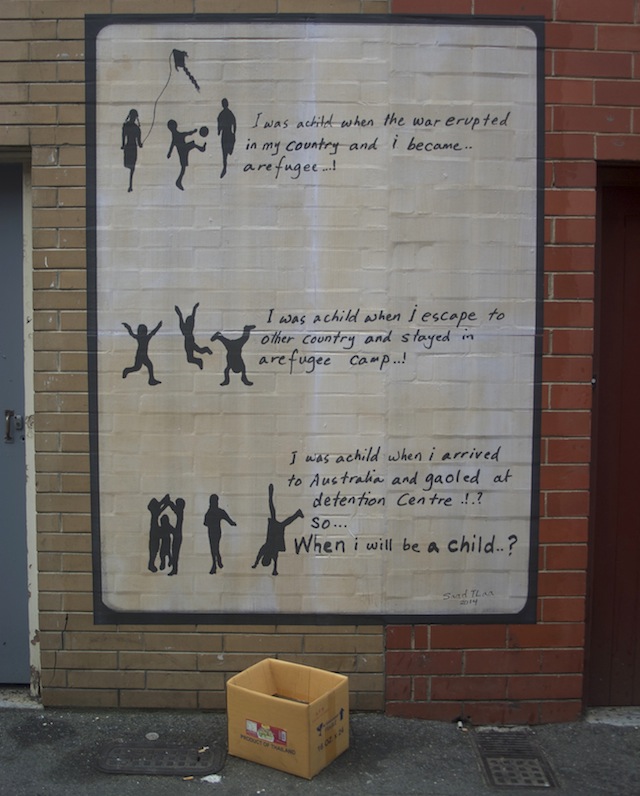
In some ways, Bound For South Australia is similar to JR‘s Inside Out Project, which essentially allows anyone to become a mini-JR using JR’s facilities, and both projects suffer from a similar flaw: authorship. Both projects are ostensibly about giving a voice to those who do not have one, amplifying those disenfranchised people’s voices through a megaphone provided by a well-known artist. Except in both cases, the “artist” is a white male who at the end of the day takes credit for the project, and the often non-white participants are somewhat left anonymous or effectively anonymous, arguably used as props by the “lead artist.” In both cases, there’s arguably a reason for that anonymity. JR and Drew have provided a voice to people living in dangerous situations, who may not be in a position to name themselves safely. These situations are probably entirely necessary. Still, they are ironic, and muddy the waters as to how much these projects actually humanize their subjects/participants.
How well can Drew’s project humanize asylum seekers when journalists pick up on the project as a Peter Drew project and the names of the asylum seekers who drew the works that are on Adelaide’s walls, effectively relegated to the role of technicians, are kept secret? It is telling that even Drew seems to conceive of this as a Peter Drew artwork, not a series of 36 artworks facilitated or installed by Drew.

What if, in Drew’s case, he had not actually claimed responsibility for the wheatpastes? Would an anonymously distributed press release, or a press release distributed by a human rights organization without Drew’s name, or no press release or explanation at all, have gotten the same attention for the project? I’m not sure. On some level, Drew is taking advantage of the very people he is trying to help, but I get the sense that such exploitation may be necessary for the success of the project, a project with the admirable goal of awareness about the asylum seeking process in Australia.

Photos by Peter Drew